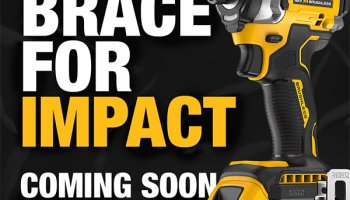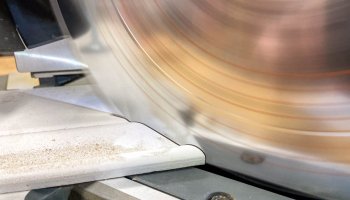
Back in 2010, we wrote about better batteries using graphene nanotech. That was a collaboration between the Department of Energy and Vorbeck Materials. Scientists used graphene to enable lithium-ion batteries to recharge in minutes rather than hours. It’s been quite some time. While graphene has yet to materialize, we’re back with some more of the latest lithium-ion battery technology advancements.
New Battery Packs
New Li-ion battery packs have surfaced from the likes of Milwaukee, DeWalt, Hitachi, Bosch, Makita, and others. This list represents some of the more advanced technological lithium-ion battery pack leaps made in the past few years:
A majority of the battery pack advances have to do with either the use of new battery cells or the use of multiple voltages. Milwaukee, Metabo, and Bosch fall under the former. DeWalt and Hitachi, the latter. Makita makes the list simply because they opted to maintain backward compatibility through the use of two parallel batteries in their 18V X2 LXT platform.
Tabless 4680 Lithium-ion Battery Cells
On Tesla Battery Day we saw the announcement of a new tabless 4680 battery cell. It delivers 6X the power and 5X the energy of a 2170 cell. It also delivers 16% more range on EV vehicles like those produced by Tesla. Just the form factor of this cell alone results in a 14% reduction in dollar per kilowatt-hour.

With these battery cells, you coat the active materials onto films like you would with any battery. However, you get a dramatically accelerated winding process for these cells because you don’t need to stop for the tab. They then assembled the “jellyroll” into the can where the electrolyte is added and everything is finished up.
The new tabless 4680 battery not only produces a larger cell. It also increases the production capacity for these cells and allows for faster charging and discharging. This occurs because the tabless design dramatically shortens the distance the electrons need to travel.
The other thing to note is that these new tabless batteries use “Tesla” silicon for the anode design. This produces a highly effective but extremely economical design with up to a 20% range extension for cells. On the cathode side, Tesla is working on using higher concentrations of nickel without cobalt for some cells.
Will we ever see these batteries in power tools? Who knows—but I sure hope so! You can get a whole lot more information about these batteries by watching the Tesla Battery Day presentation here.
Vorbeck and researcher Ilhan Aksay at Princeton University, [DOE] has demonstrated that small quantities of graphene in batteries—an ultra-thin sheet of carbon atoms—can dramatically improve the power and cycling stability of lithium-ion batteries and maintaining high storage capacity. Combined with Georgia Tech’s work on self-assembling nanotech, the pioneering work could lead to the development of graphene-based batteries that have two major advantages:
- They can store larger amounts of energy in the same size package, and
- they can recharge much more quickly.

Graphene allows more ions to transfer between cathode and anode, decreasing charging time. But there’s a catch: although graphene improves efficiency, it increases the length of the path the ions must travel. This has impeded improvements in graphene-based batteries, but new research may have a solution.
Ars Technica recently reported that scientists can use magnetism to align graphene and straighten paths taken by the ions. They coated the otherwise non-magnetic graphene flakes with iron oxide nanoparticles and introduced a magnetic field. Consequently, the “tortuosity of the paths through the electrode decreased by a factor of four” when compared to the control group. That represents more than just coincidence or average.
Solid State Batteries
Recently, the inventor of the Li-ion battery discovered solid-state battery technology that could replace lithium-ion. With what, you ask? With a much more available resource: sodium! John Goodenough is that inventor, and our article referenced above offers a sneak peek into what might be the next dominant battery format.

Self-Healing Batteries
One of the more impressive technologies came about with a report on self-healing Li-ion batteries. With batteries, damage accumulates over time. As a result, the efficiency of the batteries degrades leading to eventual failure. Self-healing batteries promise to extend the life of these cells and packs beyond what’s expected.
Nano-sized Lithium-ion Batteries
The development of nano-sized Lithium-ion batteries also caught our eye. With these, we’re looking at miniaturization of components and technology. While these don’t promise power tool power levels, that leaves plenty of opportunity for electronics we have yet to even imagine.

You Might Say That’s Attractive
What does this mean? Well, if reproducible at scale, we might experience another wave of lithium-ion battery improvement. These are fascinating times. We’ll keep you apprised of new developments as we discover them. We hope you’ve enjoyed reading about the latest lithium-ion battery advancements. If you’re a Pro and you have any lithium-ion battery tips, add them in the comments below.






